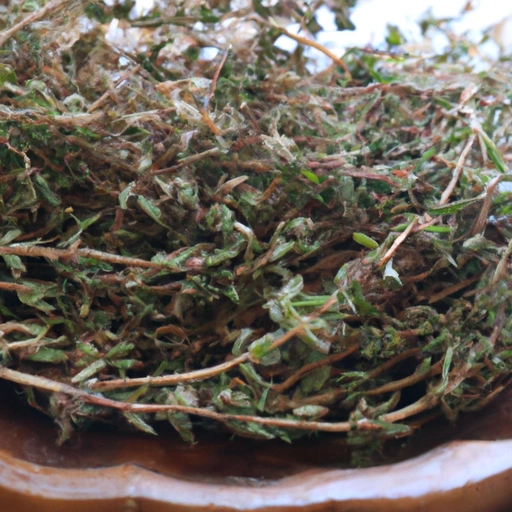Thyme
Description

Thyme is a versatile herb known for its pungent, earthy flavor, which is a staple in various cuisines across the globe. It is used both fresh and dried, and it's a common ingredient in spice blends. Thyme is not only prized for its culinary uses but also for its medicinal properties. This small, aromatic perennial is a member of the mint family and is characterized by tiny green leaves on thin stems. As a culinary ingredient, it is appreciated for its ability to add depth to the flavor of soups, stews, and roasted dishes.
Common uses
Thyme is commonly used to season meats, soups, and stews. It is also a component of the bouquet garni and herbes de Provence, traditional herb blends used in French cuisine. In Middle Eastern cooking, thyme is used in za'atar, a spice mixture that also contains sesame seeds and other herbs. Thyme adds a savory note to vegetable dishes, and it can be found in bread, sauces, and flavored butters.
Nutritional value
Calories
One tablespoon (1 gram) of fresh thyme contains approximately 1 calorie.
Protein
Thyme provides about 0.05 grams of protein per tablespoon.
Fat
This herb contains a negligible amount of fat.
Carbohydrates
Thyme has about 0.24 grams of carbohydrates per tablespoon.
Vitamins
Thyme is rich in Vitamin C and also provides Vitamin A.
Minerals
It contains small amounts of minerals such as potassium, magnesium, and calcium.
Health benefits
Thyme has antiseptic and antifungal properties, making it beneficial for respiratory health. Its compounds, like thymol, have been used in cough syrups and mouthwashes. It may also have antioxidant properties which can contribute to overall health.
Potential risks
While thyme is generally safe for consumption, excessive intake can lead to digestive problems. People with allergies to plants in the mint family should also approach thyme with caution.
Common recipes
Thyme is featured in a variety of dishes like French onion soup, roasted meats, and Mediterranean marinades. It's also used in baking, for example, in thyme-infused shortbread cookies.
Cooking methods
Thyme can be used in many cooking methods including sautéing, baking, and grilling. It is resilient to long cooking times, making it ideal for slow-cooked dishes.
Pairing with other ingredients
Thyme pairs beautifully with garlic, lemon, and olive oil. It complements a wide array of meats and vegetables, such as chicken, beef, potatoes, and tomatoes.
Summary
Thyme is a beloved herb around the world, known for its aromatic and culinary versatility. From its historical roots as a symbol of courage to its modern-day uses in kitchens across continents, thyme enriches a wide variety of dishes with its distinctive flavor and offers health benefits as well. Whether used fresh or dried, in teaspoons or grams, thyme is a global kitchen staple.